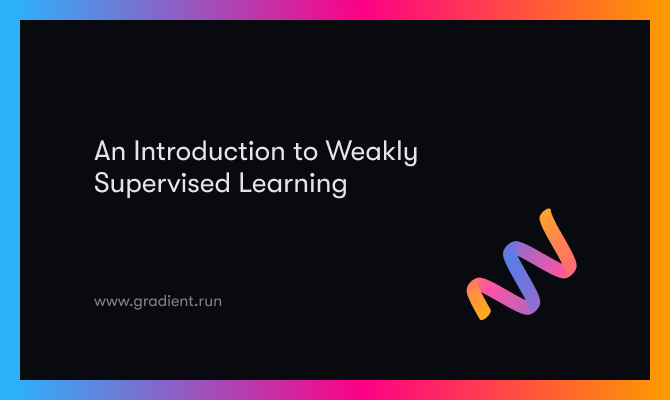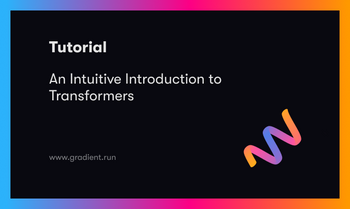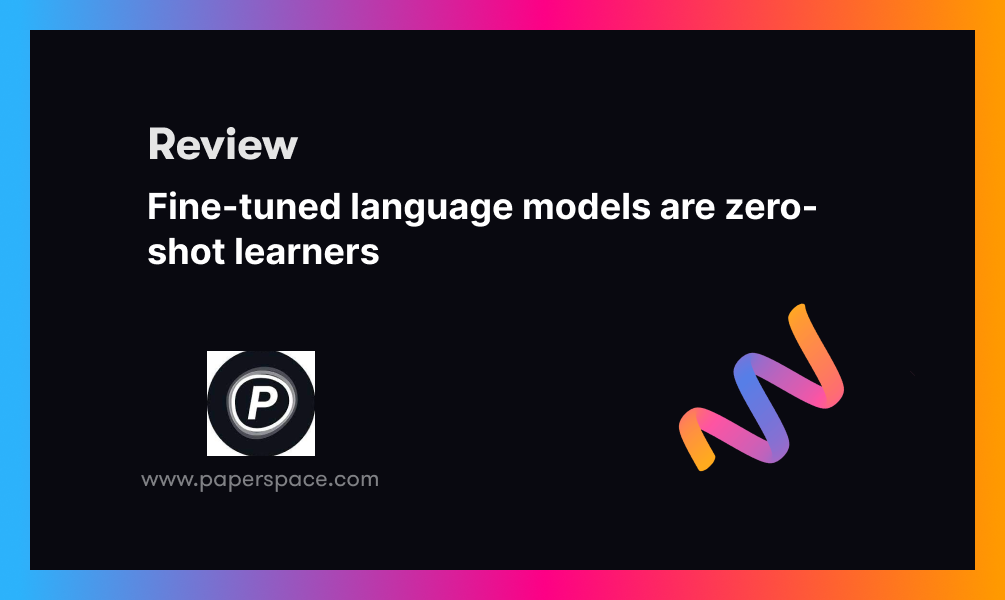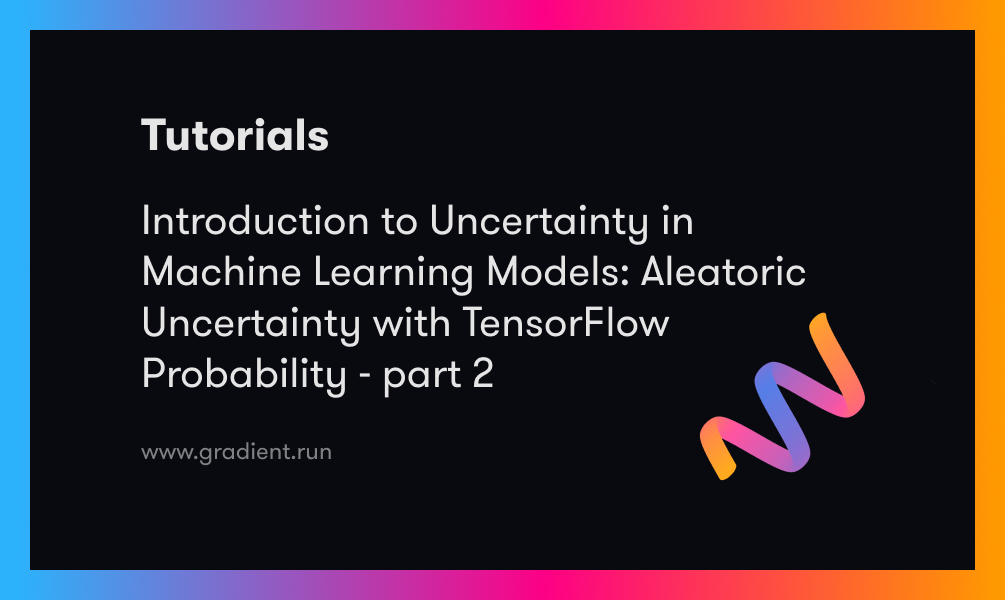Introduction
Machine learning has experienced many changes over the past few years. The focus on unsupervised and semi-supervised learning has been increasing, but a new technique called weakly supervised learning has recently caught the attention of researchers and industry professionals alike.
You don't need any labeled data for training models in weakly supervised learning. However, this comes at a cost: accuracy suffers when compared with other types of supervised learning approaches. In this article will examine this emerging technology in detail.
Supervised and Unsupervised Learning
In short, machine learning can take one of two approaches: supervised learning and unsupervised. While the former is used to train a model using known input and output data to forecast future outputs, the latter is used to uncover hidden patterns within the inherent structures of input data.
Supervised Learning
Supervised learning refers to the use of labeled data to train a machine (or deep) learning algorithm with the goal of making predictions about future occurrences. The success of the trained algorithm is dependent on a large dataset that is fully annotated with high-quality labeling. The process of using such a data collection during supervision is referred to as strong supervised learning.
In supervised learning, a model is trained using labeled data, which includes both the raw input data and the model's output. The data is divided into a training and test set, with the training set used to train our network and the test set used to generate new data for forecasting outcomes or determining the model's correctness.
There are two types of supervised learning:
· Classification - Classification problems take advantage of an algorithm to categorize test data into specific categories. Some popular classification algorithms include decision trees, support vector machines, linear classifiers, etc.
· Regression - Regression is yet another type of supervised learning that employs algorithm for understanding the relationship between independent and dependent variables. Regression models are useful for forecasting numerical values by using different data points. There are several common regression methods, including logistic regression, linear regression, and polynomial regression.
Unsupervised Learning
When comparing supervised and unsupervised learning, the most significant distinction is that whereas the former makes use of labeled input and output data, the latter does not. Unsupervised learning is a general term that refers to all sorts of machine learning in which the outcome is uncertain, and there is no instructor to educate the learning algorithm. Unsupervised learning involves just showing the input data to the learning algorithm and asking it to extract information out of it.
Unsupervised learning takes advantage of machine learning algorithms to infer patterns from unlabeled data sets. These algorithms are adept at finding hidden patterns in data but do not require human intervention. Its ability to detect both similarities and differences in data makes it a good choice for image identification data analysis, and image identification, etc.
Unsupervised learning is of the following types:
· Clustering - Clustering is a technique for arranging items into clusters in such a way that objects with the greatest degree of similarity stay in one group and have little or no similarity to objects in another group.
· Association - An association rule is a kind of unsupervised learning technique used to identify a link between the variables in a large database. This is another unsupervised learning method that employs different rules to determine relationships between variables within a given dataset.
What is Weakly Supervised Learning?
The term "weakly supervised learning" refers to a variety of learning processes that aims to construct predictive models without much supervision. It consists of a method for instilling domain knowledge, as well as functions that mark data based on newly created training data.
A machine learning model performs as expected when the provided data exactly covers the domain for which the model is intended and is organized per the model's characteristics. Because most accessible data is in an unstructured or low-structured format, you should take advantage of weak supervision to proceed with the annotation of this kind of data. In other words, weak supervision helps when the data is annotated but of poor quality.
Weakly supervised learning is a technique of building models based on newly generated data. It is a branch of machine learning that uses noisy, restricted, or inaccurate sources to label vast quantities of training data. Weak supervision covers a wide range of methods where models are trained using partial, inexact, or otherwise inaccurate information that is simpler to supply than hand-labeled data.
Why do we need Weakly Supervised Learning?
Supervised learning methods build prediction models from large numbers of training instances. Each of these is labeled using the ground-truth output. Although existing approaches have been very effective, it is important to note that, due to the high cost associated with the data-labeling process, it is preferable for machine learning algorithms to operate with weak supervision.
Additionally, while supervised learning typically results in performance improvements with more labeled data than weakly supervised learning, we may see degraded performance when learning is done with less labeled data. Therefore, it is essential to study weakly supervised learning, which could help improve performance even with weak supervision data.
Weak supervision is more effective and scalable than other methods for addressing the problem of training data shortage. Weak supervision makes it possible to have many inputs that help to train the data. Obtaining hand-labeled data sets may be expensive or impracticable. To build a powerful predictive model, weak labels are instead used, despite being inaccurate.
Weak supervision allows you to program training data to reduce the time it takes to label it manually. It is best for tasks requiring you to handle unlabeled data or where your use case allows weak label sources.
Weakly Supervised Learning Techniques
A weakly supervised learning approach helps reduce the human involvement in training the models by using only partially labeled models. It is somewhere in between fully supervised learning or semi-supervised learning. This is a method that employs data with noisy labels. These labels are often generated by computers by using heuristics to combine unlabeled data with a signal to create their label.
In weakly supervised learning, the algorithm learns from large amounts of weak supervisory data. This could include:
· Incomplete supervision (e.g., Semi-supervised learning).
· Inexact supervision, e.g., multi-instance learning.
· Incorrect supervision (e.g., Label noise learning).
Incomplete Supervision
Incomplete supervision occurs when only a subset of the training data was labeled and used for training. This type labels only a small portion of the training data. This subset of data is usually correctly and precisely labeled, but it's not enough to train a supervised model.
There are three approaches adopted for incomplete supervision:
· Active Learning - Active learning is a type of semi-supervised learning in which the ML algorithm is given a small subset of human-labeled data from a larger unlabeled dataset. The algorithm analyzes the data and makes a forecast with a certain confidence level.
· Semi-supervised Learning - Semi-supervised learning is a method of learning that uses a combination of labeled and unlabeled examples. The model must then learn from these examples to make predictions.
· Transfer Learning - In machine learning, transfer learning involves storing and applying knowledge gained from solving one problem to another. As an example, the knowledge gained from learning how to recognize cars can be applied to the recognition of buses.
Inexact Supervision
Inexact supervision uses labels and features (i.e., metadata) to identify the training data. Inexact supervision occurs when the training data comprises labels that are not as precise as desired and is used with only coarse-grained labels.
Inaccurate Supervision
When the labels that are available are not necessarily the ground truth, inaccurate supervision is applied. As the name implies, inaccurate supervision contains errors, with certain ground truth labels being incorrect or of low quality.
This usually occurs when crowdsourcing data when there are distractions, errors, or difficulty categorizing the data. The aim is to gather instances that may be mislabeled and rectify them. Inaccurate supervision occurs when there are some labels with mistakes in the training data.
Applications of Weak Supervision
Weak supervision is not related to a particular supervision task or problem. Instead, you should take advantage of weak supervision if the annotation of a training data set is inadequate or incomplete to get a predictive model with excellent performance. You can leverage weak supervision in text classification, spam detection, image classification, object identification, medical diagnosis, financial problems, etc.
Weakly Supervised Learning for Object Localization
The process of recognizing the position of one or more items in a picture and drawing a bounding box around their extent is referred to as object localization. Object detection combines image localization and the classification of one or several objects within an image.
Weakly-supervised object localization is a strategy for finding an item in a dataset that does not include any localization information. In recent years, it has received a considerable attention for its importance in the development of next-generation computer-vision systems. The feature map of a classification model may be used as a score map for localization by simply training it with just image-level annotations.
Weak Supervision Frameworks
There are several weak supervision frameworks around such as the following:
· Snorkel - Snorkel is a weak supervision framework that is available as an open-source project. You can construct labeling functions in Python utilizing a small quantity of labeled data and an enormous amount of unlabeled data.
· Astra - Astra is a poor supervision framework for deep neural networks that create weakly labeled data for tasks for which large-scale, costly labeled training data is not viable.
· ConWea – ConWea is a framework that provides context-based weak supervision for text classification.
· Snuba – Snuba generates heuristics to label the subset of data, and then iteratively repeats the process until a large amount of unlabeled data has been covered.
· FlyingSquid - FlyingSquid, an interactive Python-based framework that allows you to create models automatically from multiple noisy labels sources.
Summary
Unsupervised and supervised learning are two of the most prevalent machine learning methodologies. Weak supervision lies somewhere in between the two extremes: semi-supervised learning and fully supervised learning.
Weak supervision can be used when the annotations of the training data are not completely or sufficient to create a predictive model. It can be used for image classification, object recognition and text classification.










